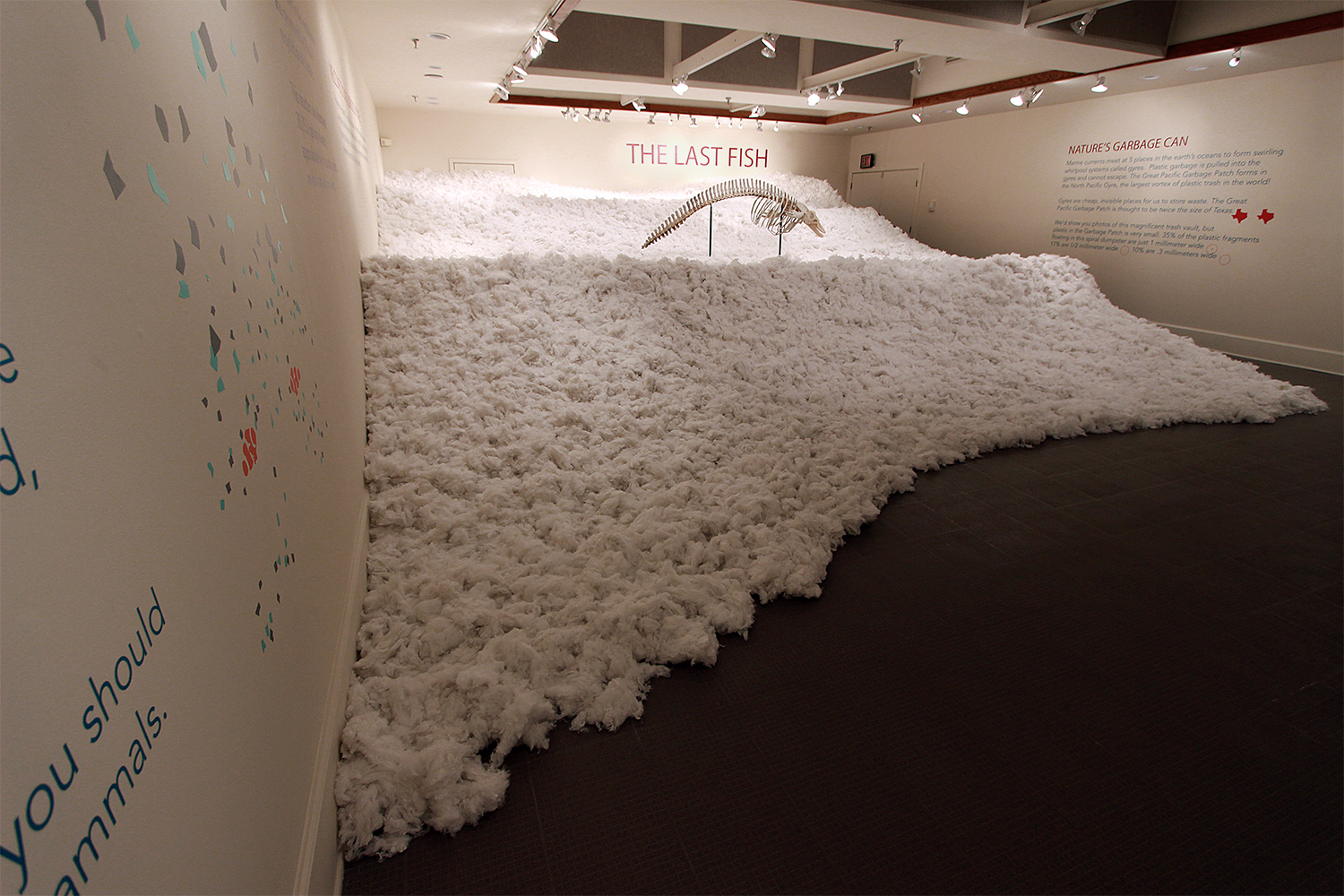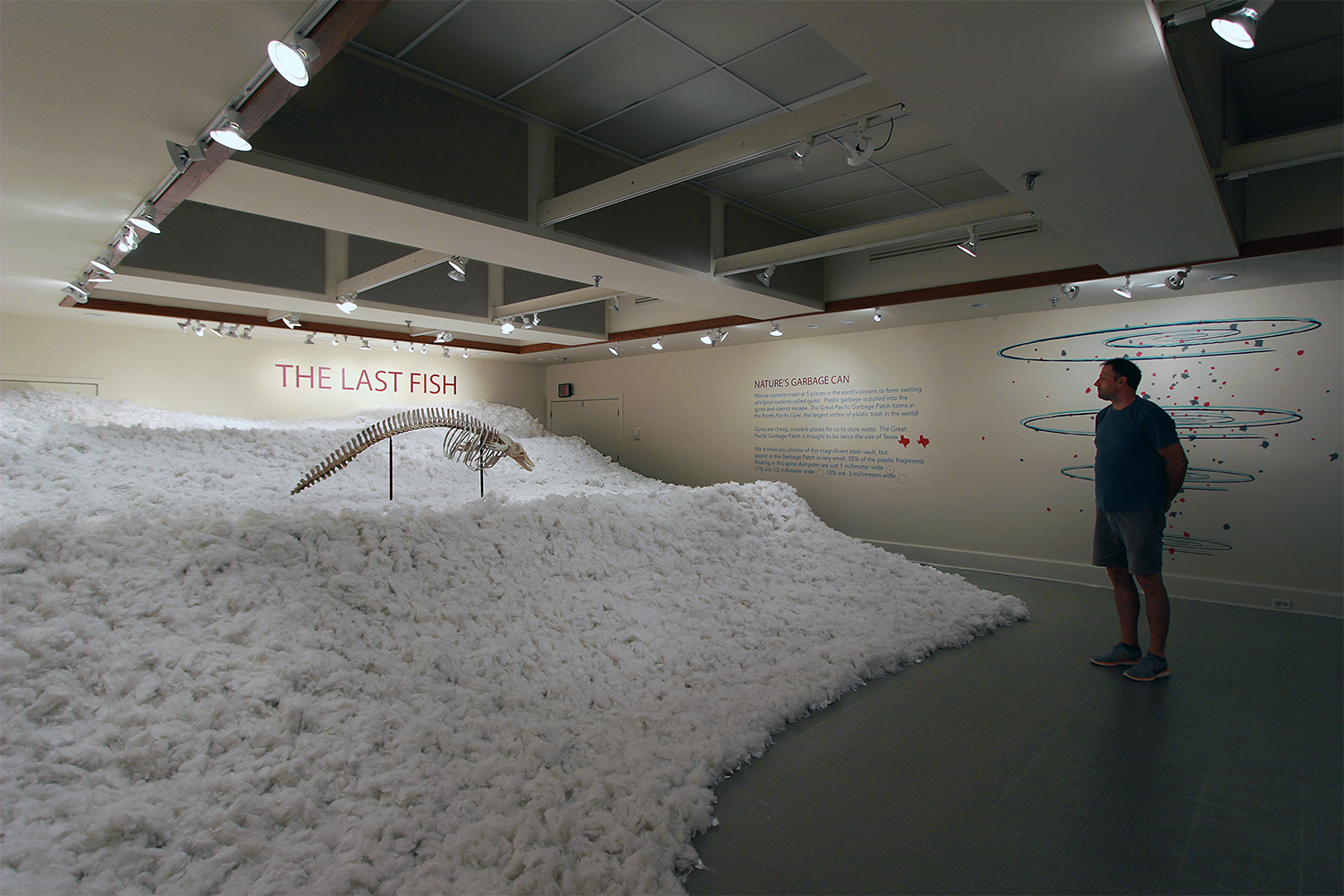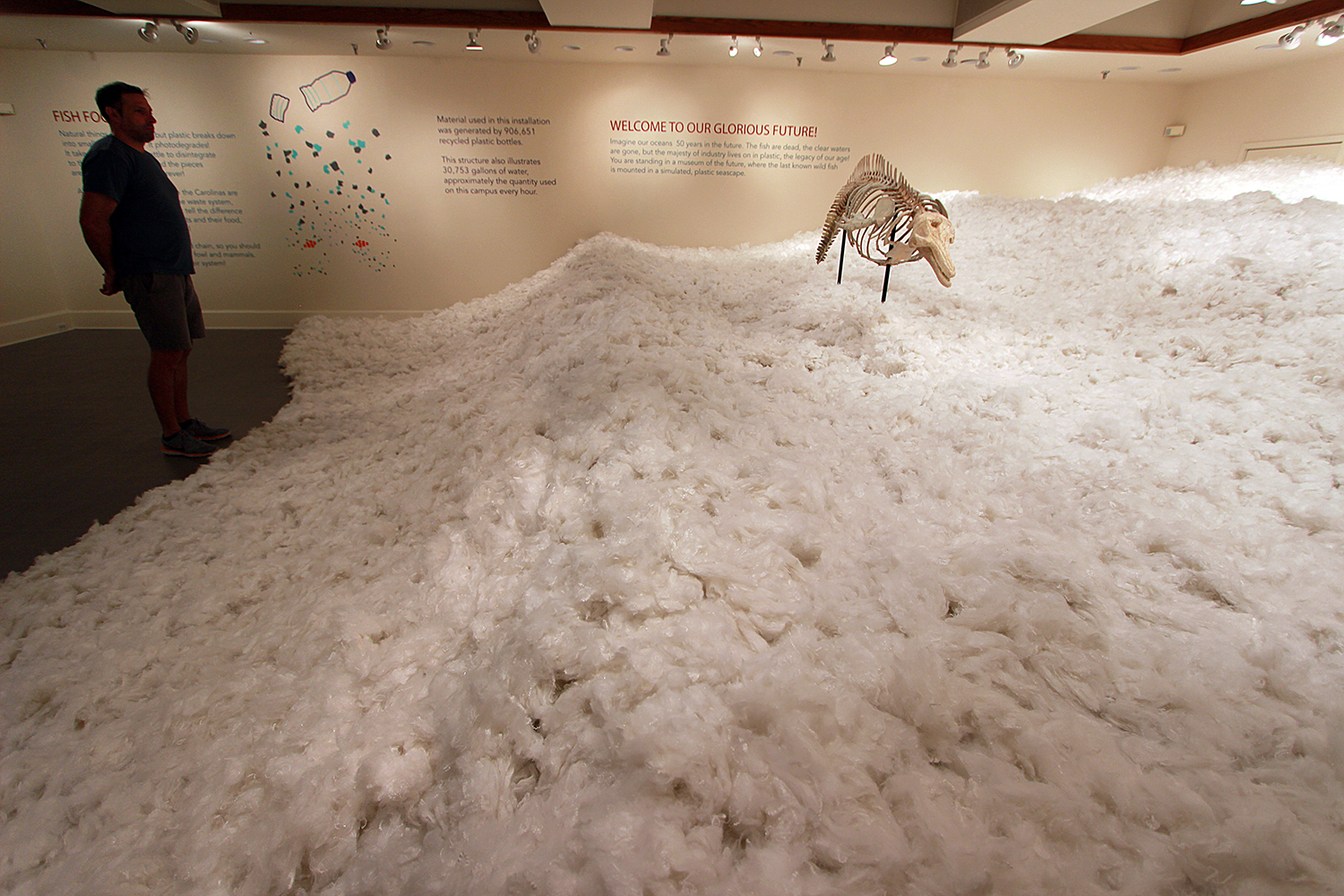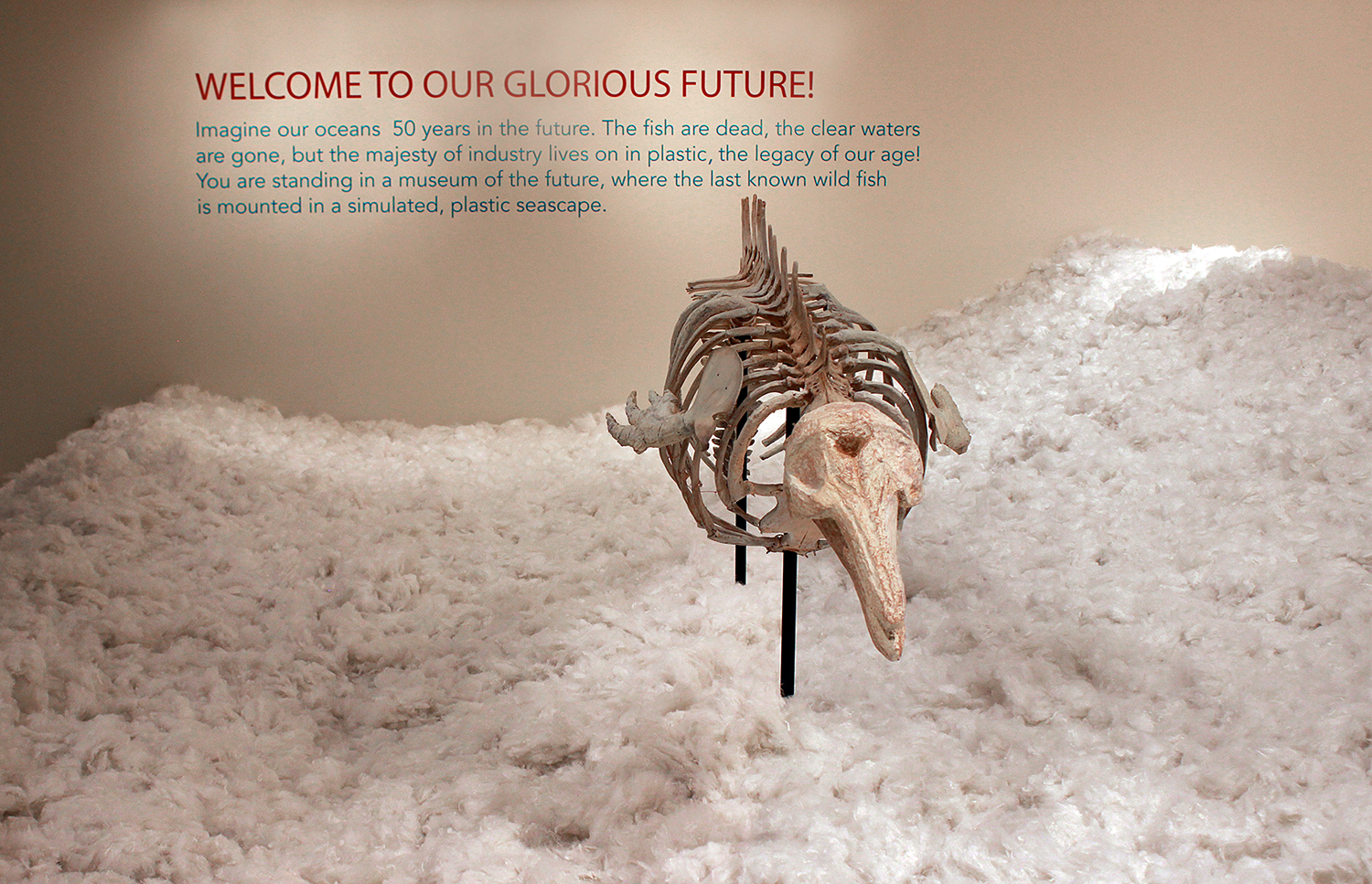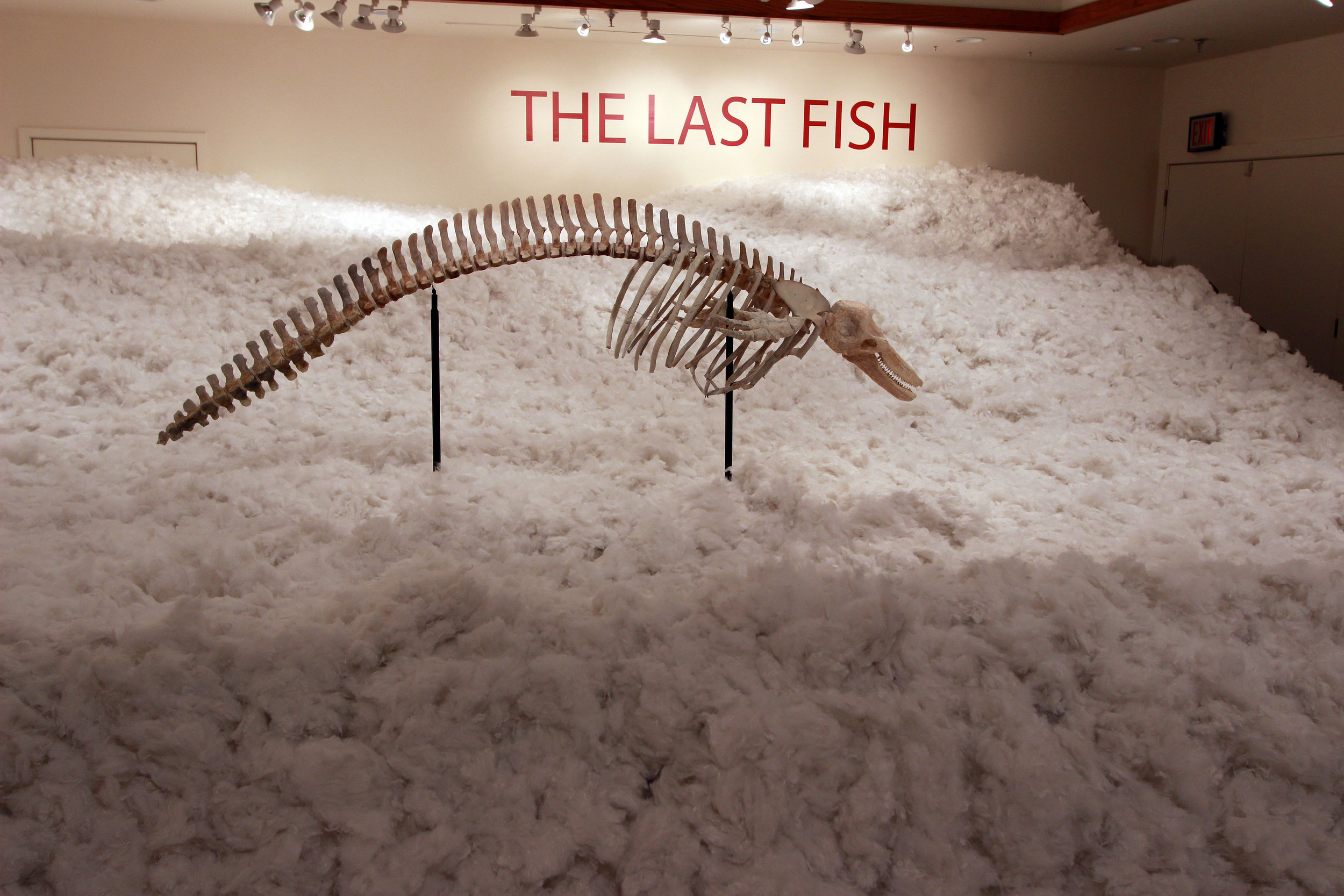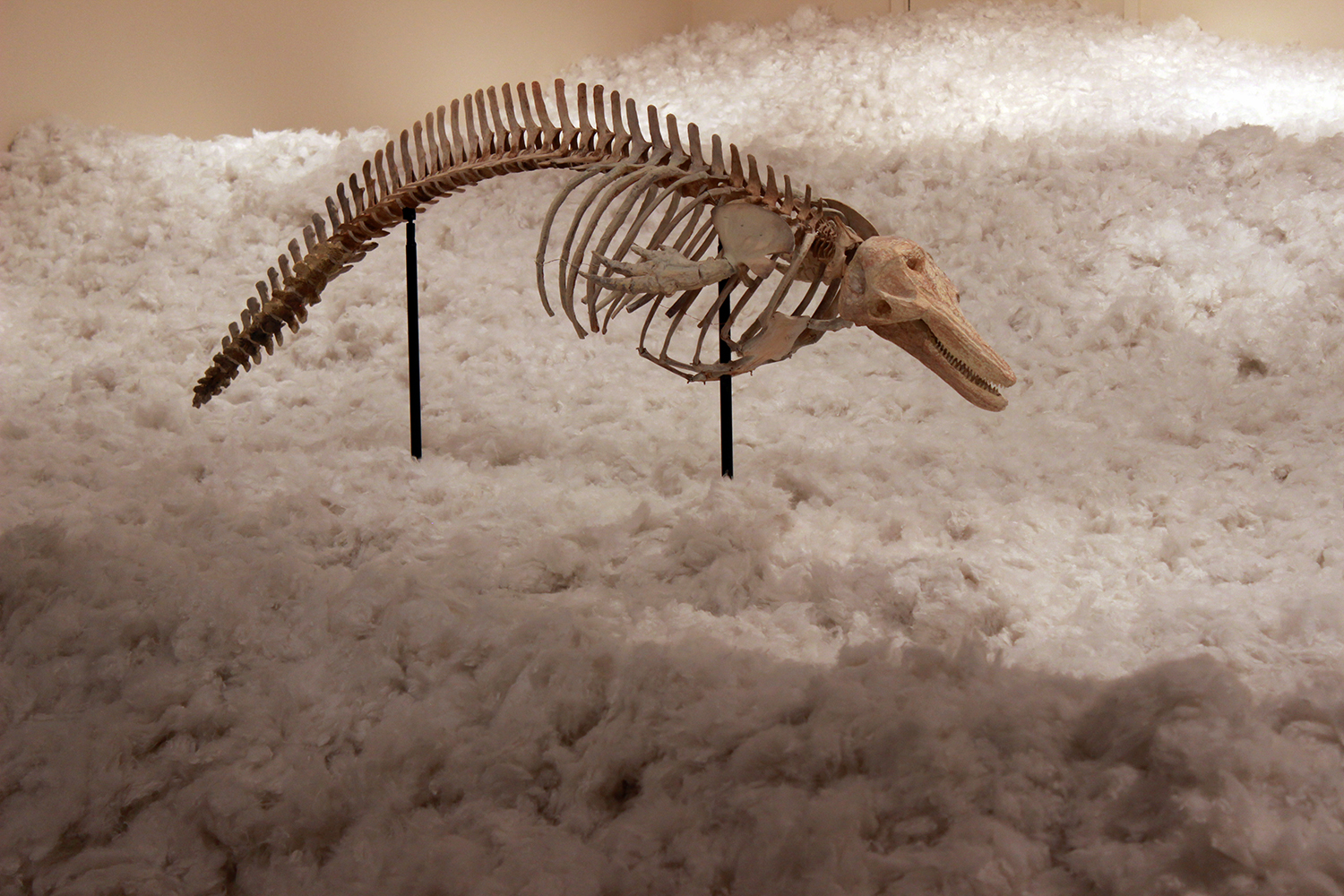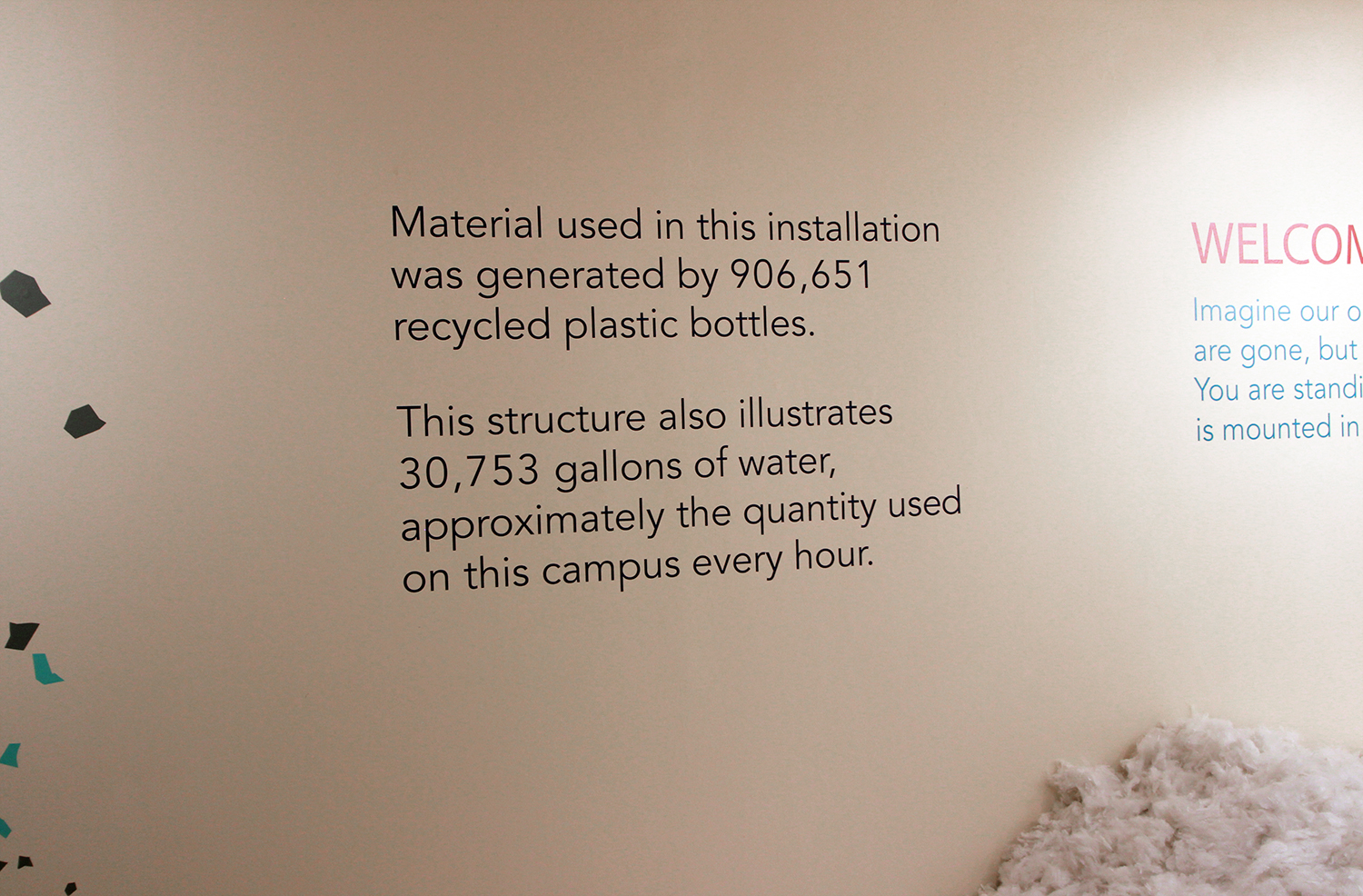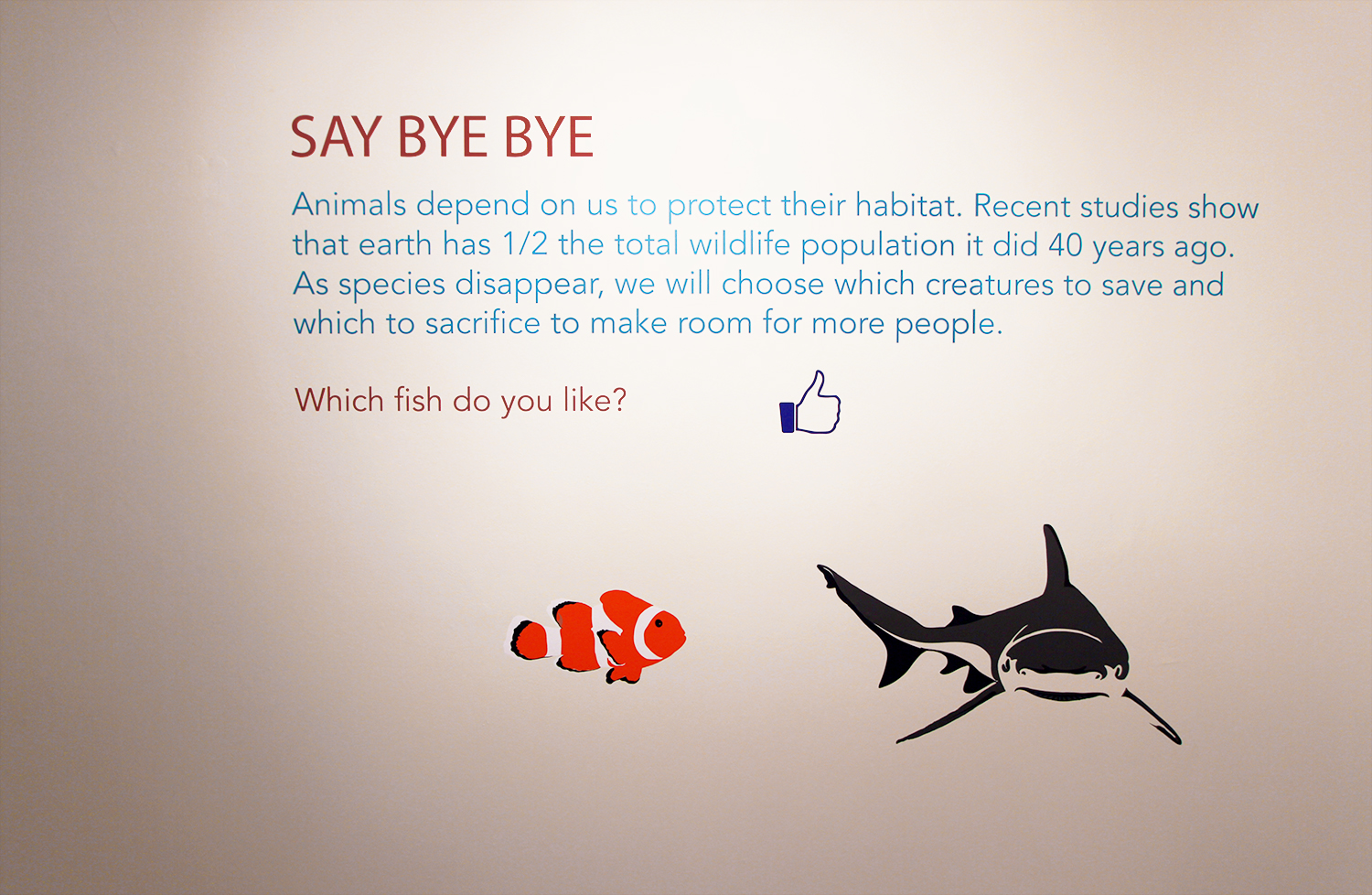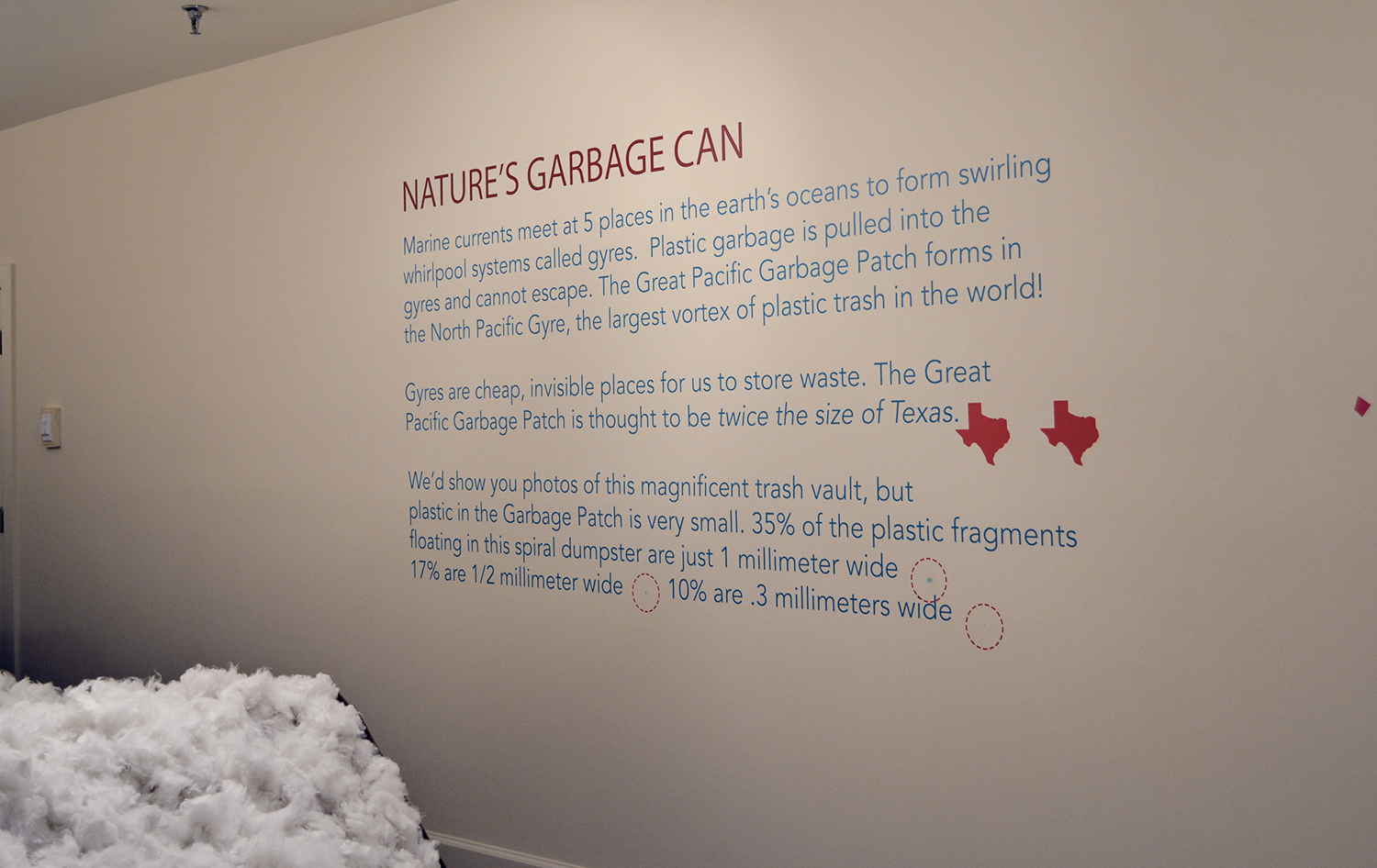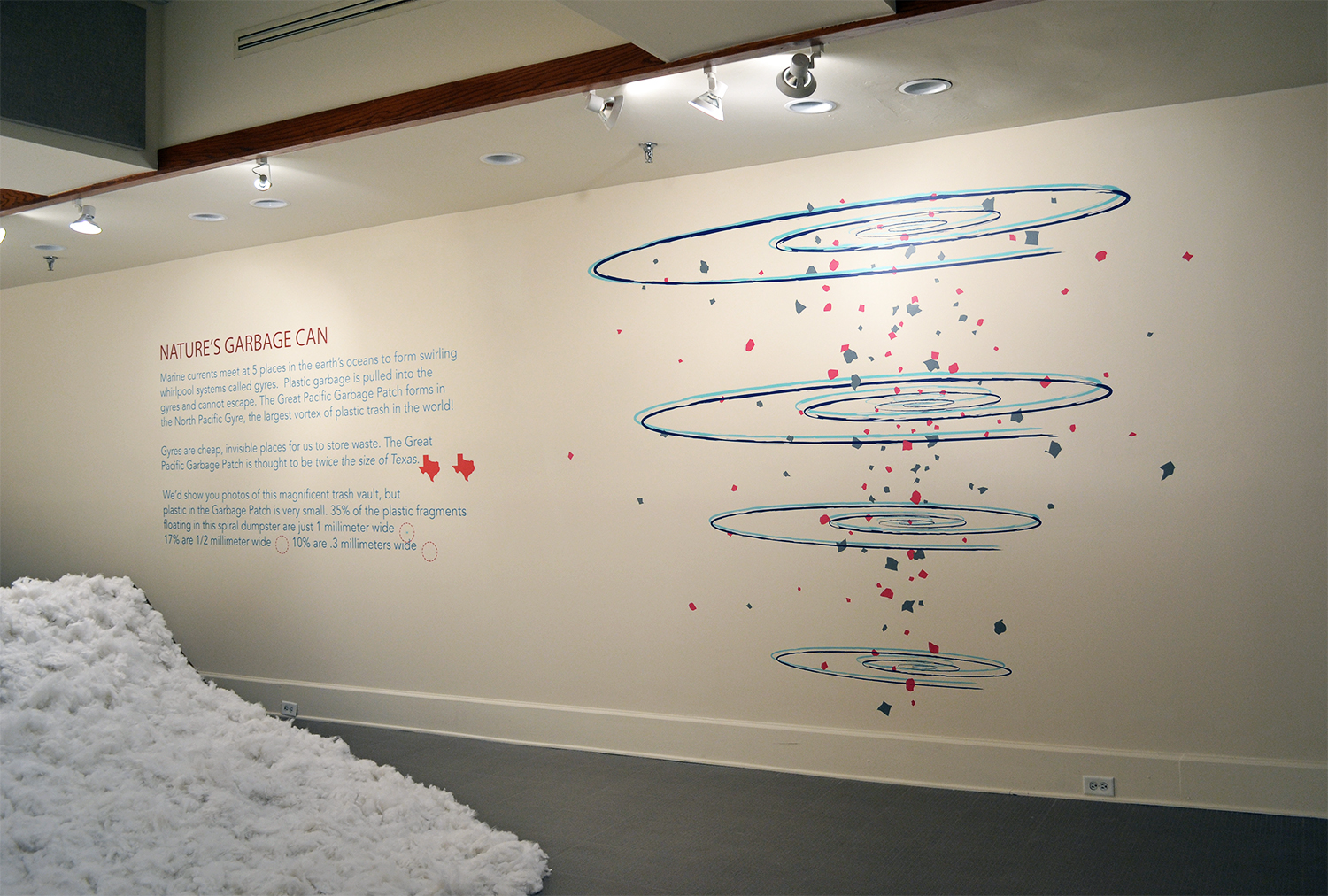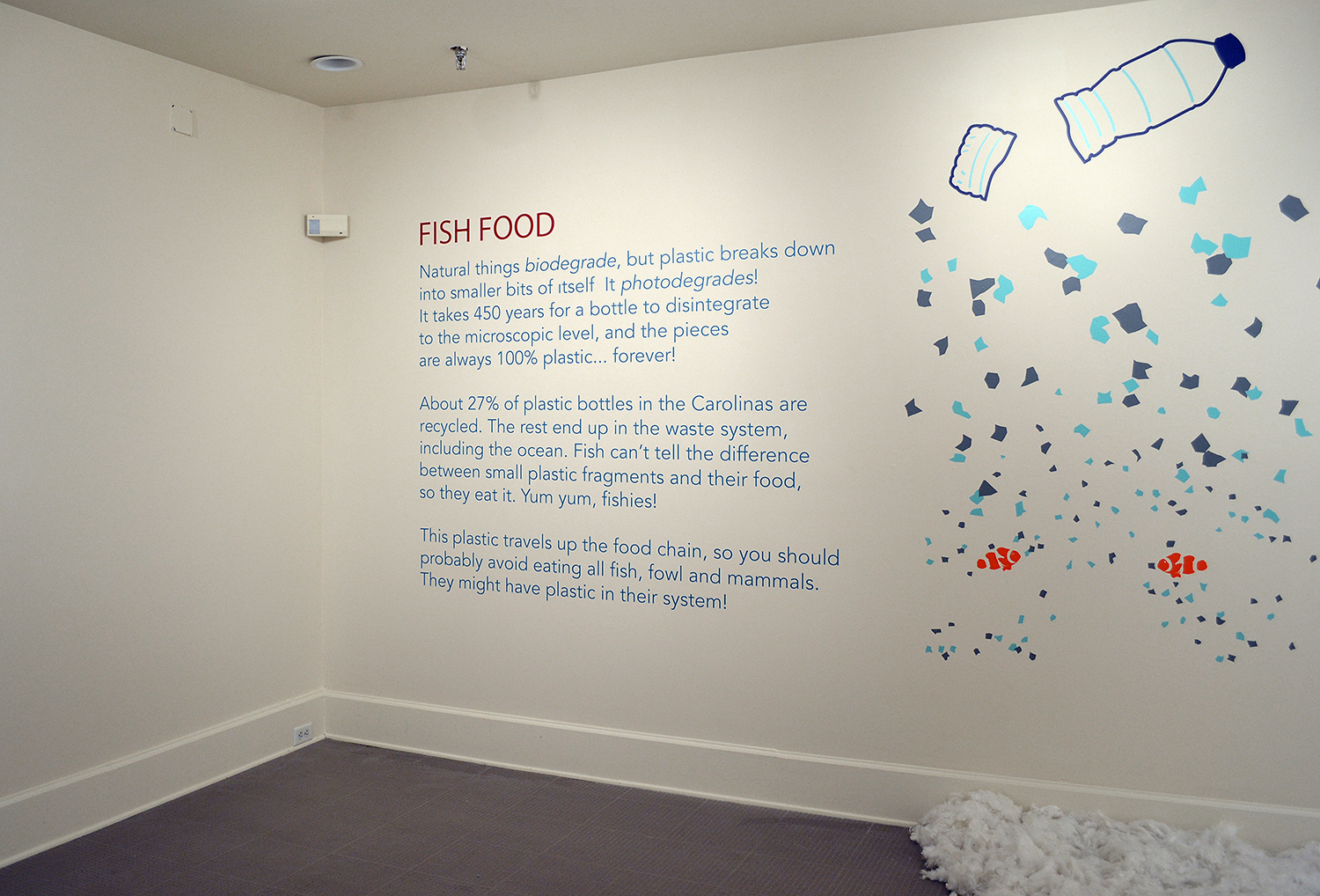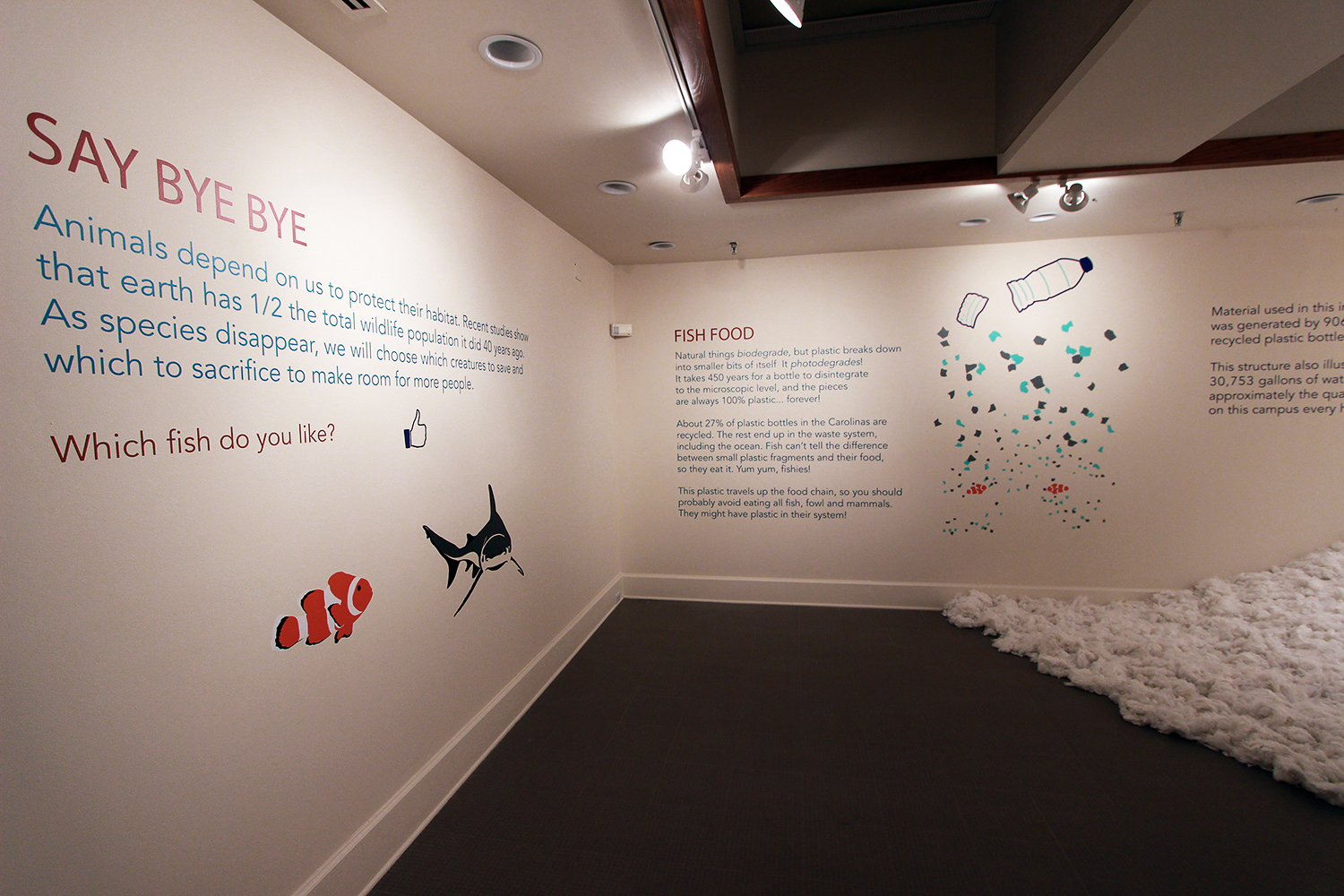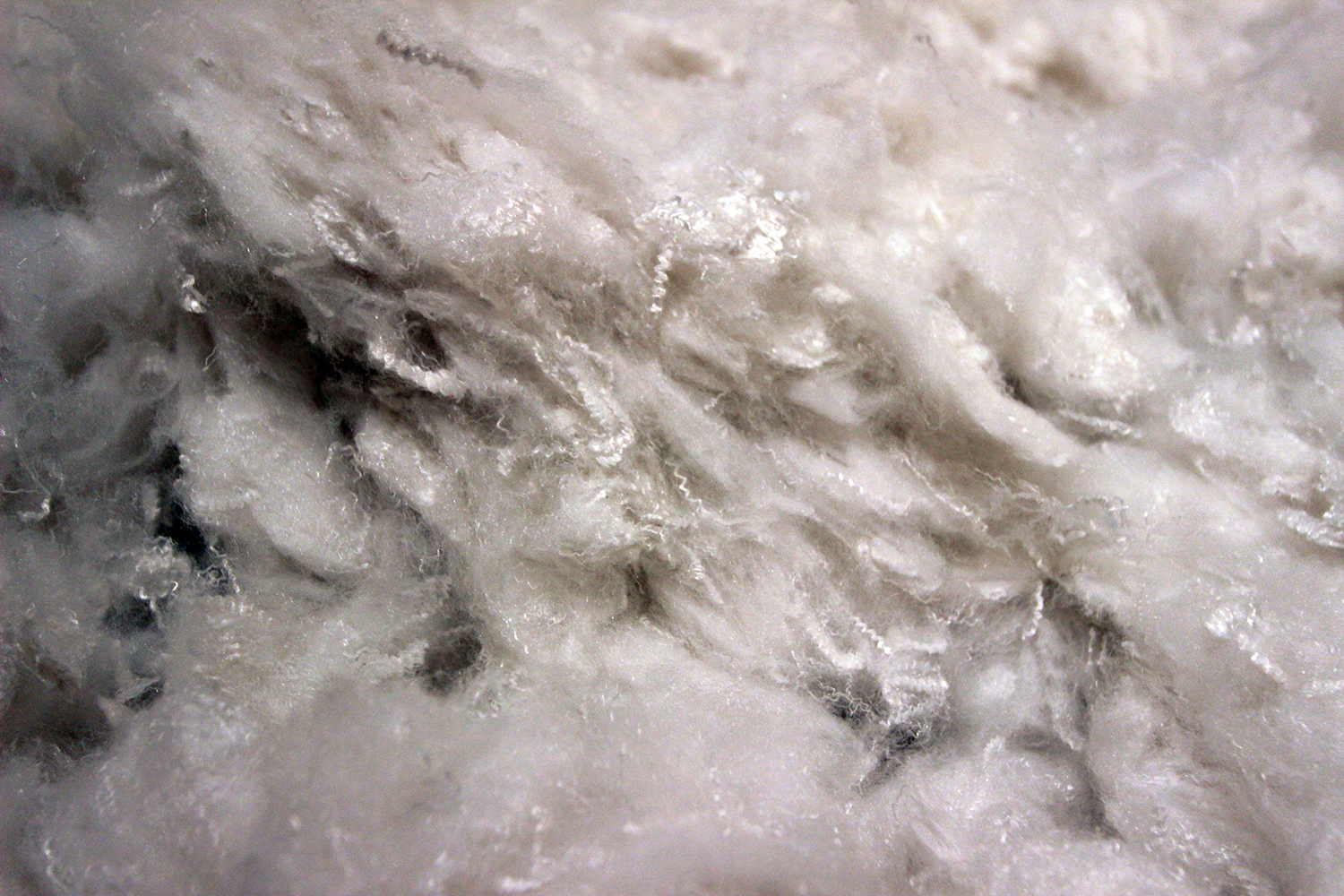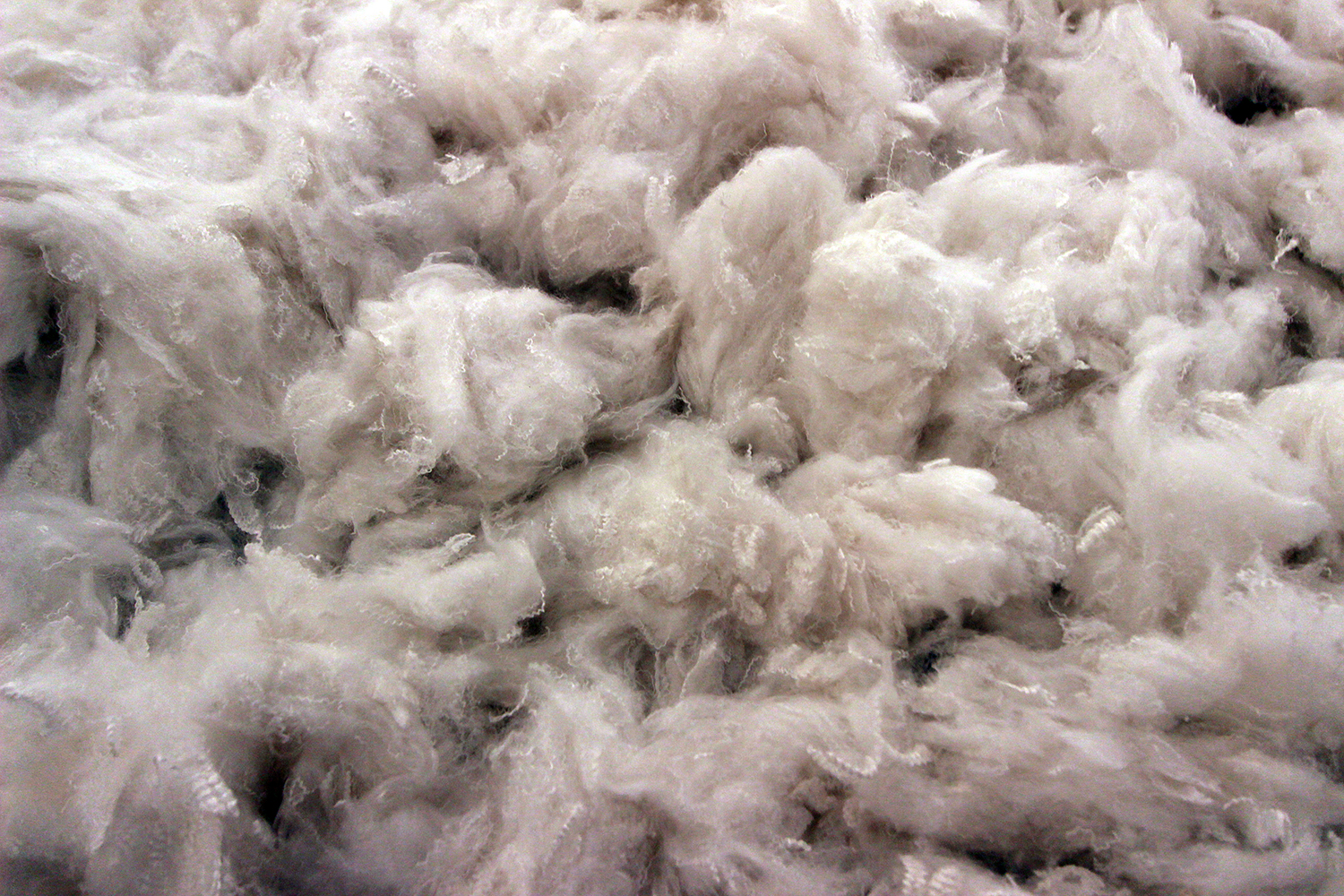The Last Fish
2015
PROJECT DETAILS
This sculptural beach was made from recycled plastic bottles. We mounted a skeletal dolphin (part real, part reconstructed) among the plastic waves. Vinyl infographics charted effects of ocean plastic pollution. The text took a cavalier attitude towards ecological degradation that tried to jolt viewers into scrutinizing the graphics.
The solo exhibition was commissioned to coincide with the conference, "Water in the World: Interdisciplinary Approaches to Access and Sustainability". At the end of the exhibition we donated the recycled plastic to a reseller that makes mattresses.
EXHIBITION
Rutledge Gallery, Winthrop University Galleries, Rock Hill, South Carolina, 2015
Collaboration with Jarod Charzewski, College of Charleston, Charleston, SC
Plastic bottles are ubiquitous in America. We drink all our beverages from them, including our own tap water, bottled and resold to us by companies like Dannon, Coke and Nestle.
Meanwhile, the water quality in our worlds’ oceans is at a critical tipping point. Plastic pollution is a primary culprit in degrading the ocean environment and threatening its inhabitants.
We comfort ourselves by dutifully recycling our plastic bottles, but recycling efforts do not keep up with the demand for new plastic products. Worse, plastic does not biodegrade, but only photodegrades, which means it breaks down into smaller and smaller versions of itself.
Small fish, coral and marine mammals mistake the tiny particles for plankton and regularly consume plastic as food. The consumed plastic makes its way up the food chain when larger fish, land animals and humans consume the smaller animals that have eaten large amounts of this regranulated plastic.
Vinyl Infographics
Recycled plastic material used in installation, made for mattresses, pillows and jackets.
